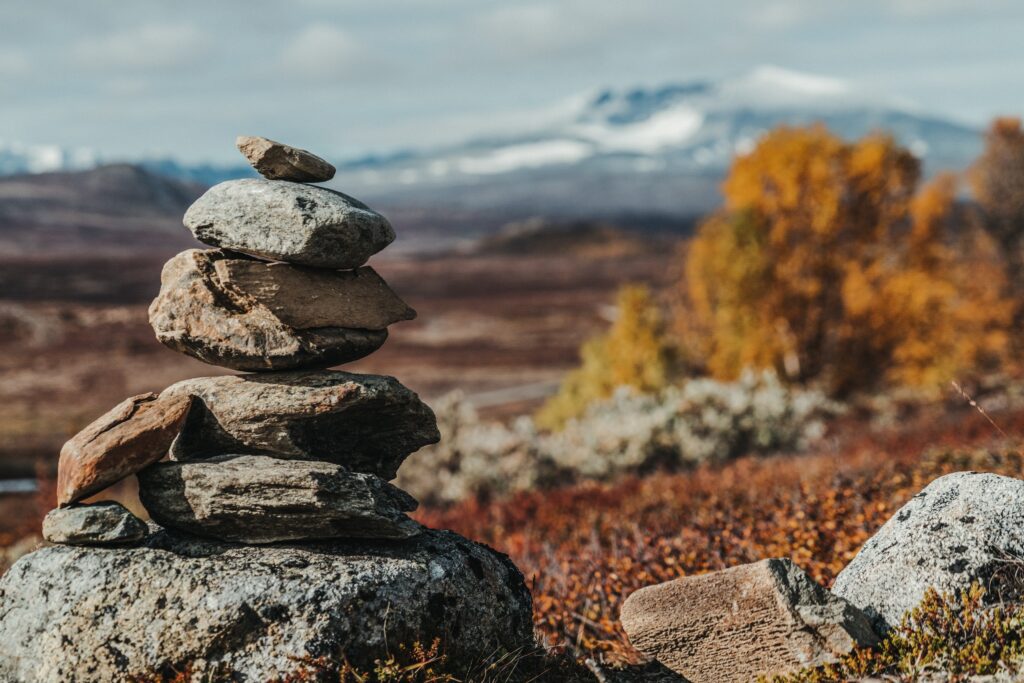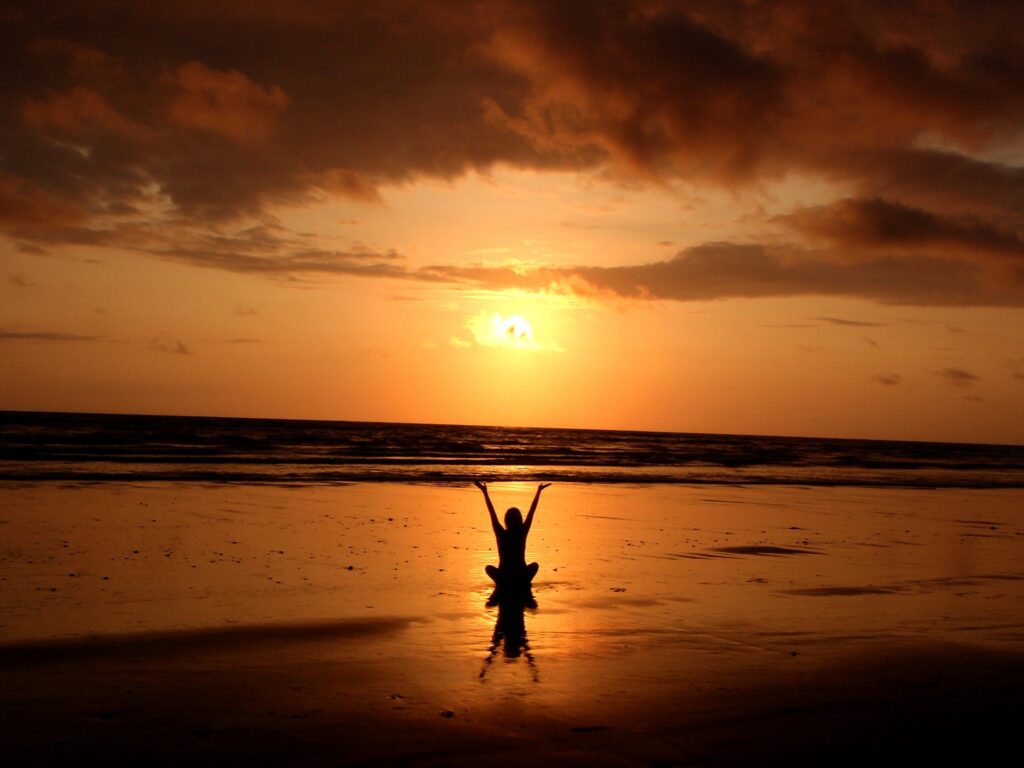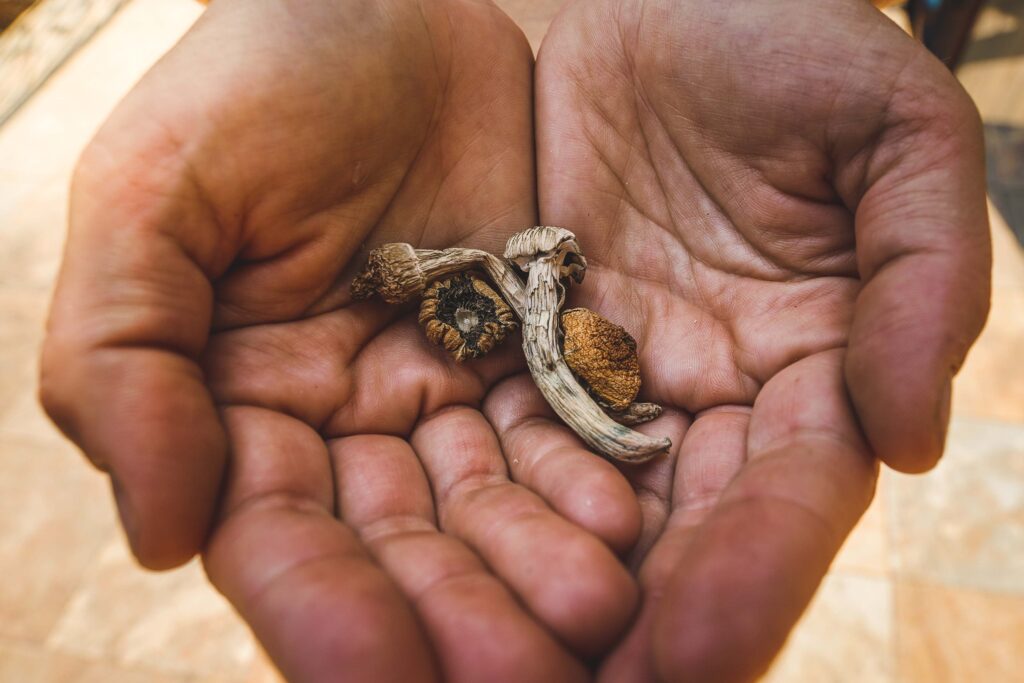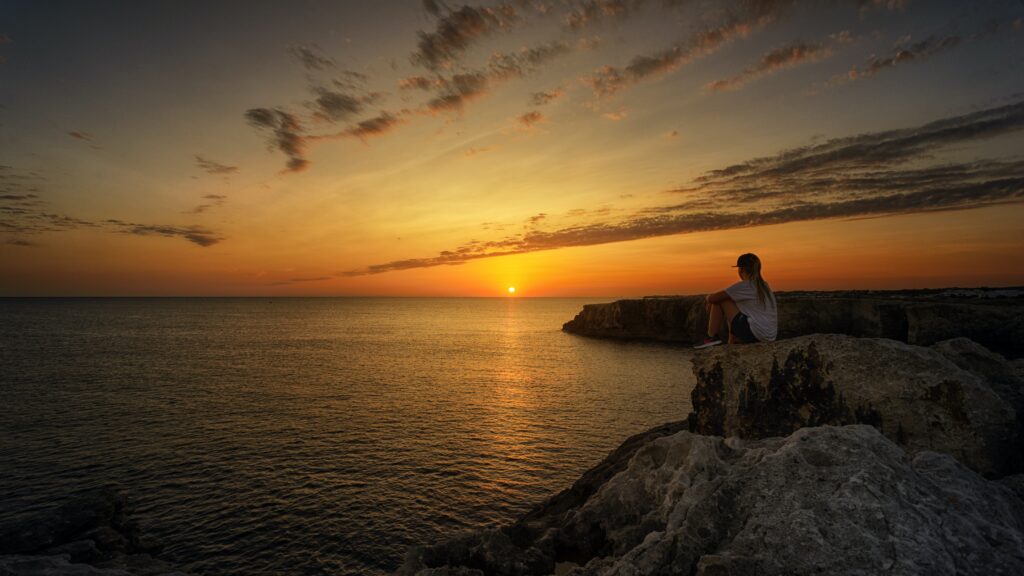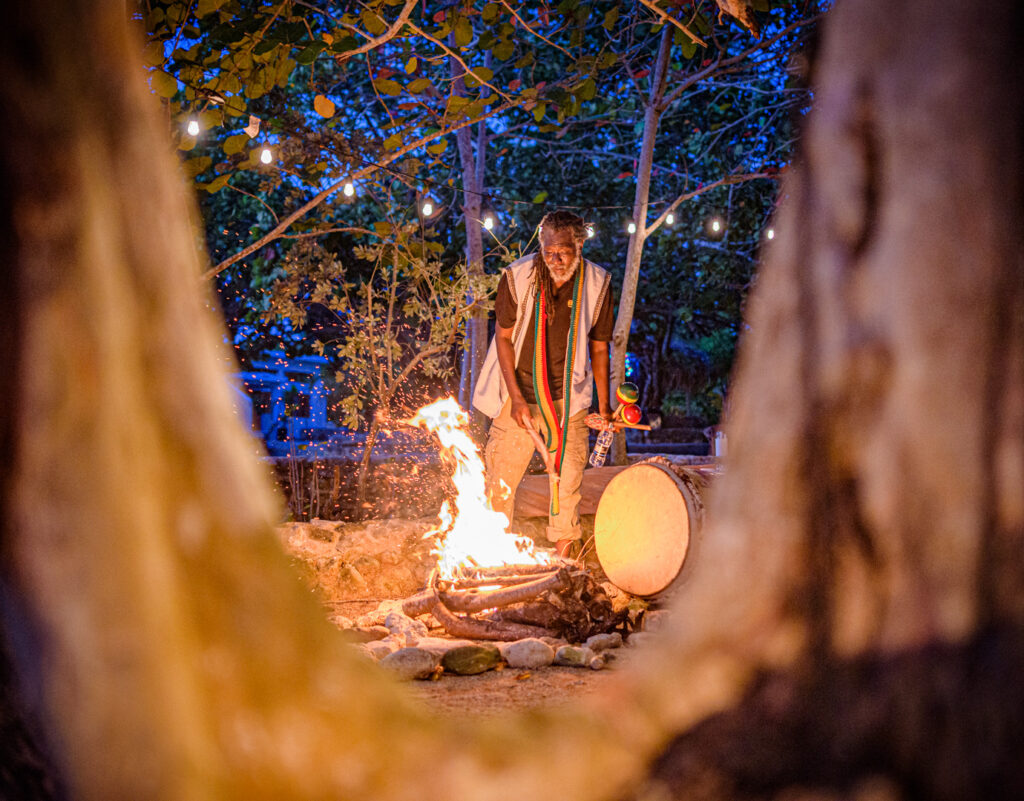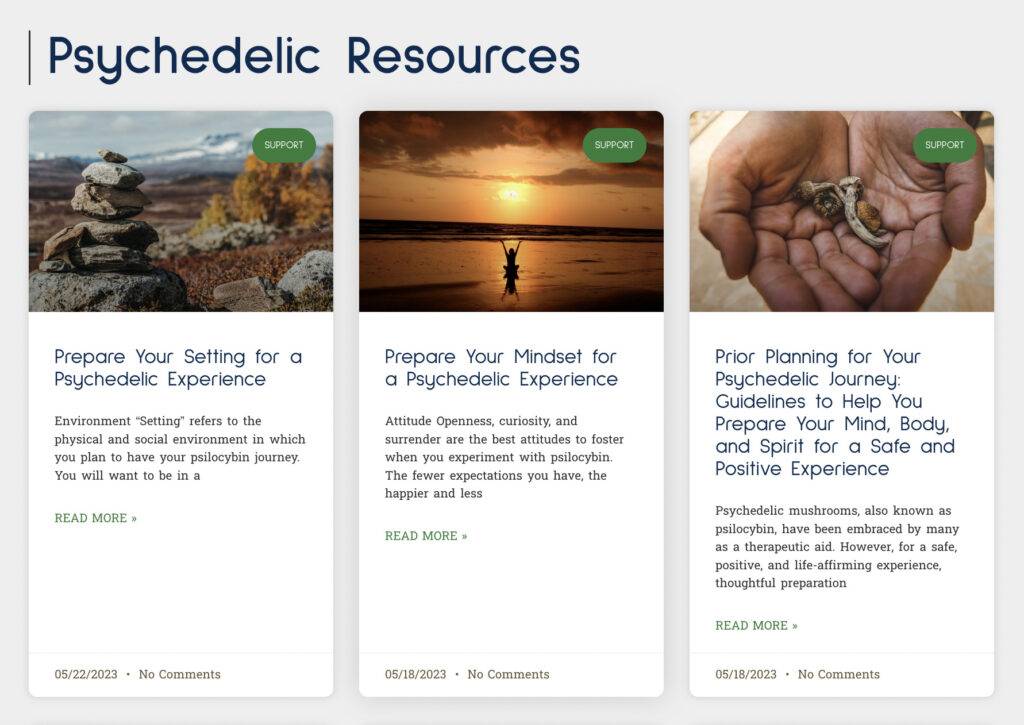Environment
“Setting” refers to the physical and social environment in which you plan to have your psilocybin journey. You will want to be in a place where you feel safe, open, free, comfortable, clean, protected, and empowered.
First, decide whether you want to be inside or outside. A familiar indoor space (e.g. your bedroom or living room) often allows for a more introspective state of mind while providing a greater sense of safety and insulation from unpredictable elements (e.g., people, machinery, weather, sounds, etc.).
A safe outdoor environment can help you connect with the vastness and beauty of nature. Being with the trees, mountains, river, ocean, animals, birds, insects, clouds, and wind — watching life “breathe” — can inspire a new relationship with nature and a profound sense of connection.
A setting that provides the benefits of both indoor and outdoor spaces is an ideal option, if available. For example, journeying at a secluded cabin with a patio and large windows in the middle of a forest will let you move between different types of environments with ease and safety. In any case, the ability to move about freely without distractions is important.
If you are not in a warm indoor space, you will want to have plenty of warm clothes and blankets available to stay comfortable. Privacy is an important element to consider. In any case, create a safe, comfortable, and quiet place to lie down and relax, with easy access to a toilet or a natural area to relieve yourself.
Organize and clean your environment. Remove clutter and any objects you might trip over. Clear your space of things that might bring up unhappy feelings (e.g. a pile of dirty laundry or dirty dishes in the sink). Be mindful of sharp or breakable objects. Removing them can help you feel more at ease. The cleaner your space, the better; it is impossible to predict what you will want to do and where your body will be in the room or environment. For example, at a certain point, you may want to lay on the floor or roll around the room. Having soft pillows and blankets can be comforting.
A stressful, noisy, or dirty environment may result in an unpleasant journey. Conversely, a warm, cozy, and safe place is more conducive to having a relaxing and joyful experience. To maximize the chances of having a pleasant, healing, and mind-expanding journey, you will want to put meaningful time and energy into the preparation of your physical space.
Music
You may wish to prepare a playlist of healing music lasting at least five or six hours. Many curated playlists are available on the internet. You are also free to create your own playlists. It’s best to select music you find comforting, calming, and awe-inspiring.
You may want to consider including:
- Classical music
- Native American/First Nations’ flute, drumming, and prayers
- Ayahuasca icaros
- Buddhist or Sikh chants and mantras
- Tibetan singing bowls
- Gregorian chants
- Ambient music and nature soundscapes
- Ragas
- Psychedelic or trance music
We suggest avoiding angry music or pieces with too many lyrics. However, everyone has different tastes: We hear stories of journeyers who had life-changing experiences listening to loud music that others might find aggressive or jarring. You also may think you don’t want to listen to a certain type of music right now, but during the experience, it is exactly what you want.
You will also want to prepare headphones or speakers with your music selection. Speakers may be the preferred option for higher doses because keeping headphones over your ears may prove challenging.
Sometimes, silence is exactly what you need, especially if things feel overwhelming. A change in music or a shift to silence can change the tone of your experience. If in nature, you may not want music at all — nature sounds carry their own vibrational frequency, which can be healing. A birdsong or an insect’s buzz can interrupt rigid thinking patterns and be a reminder of how simple life can be.
Objects
You may want to prepare a favorite picture, flower, plant, painting, image, or other meaningful object to have around you. Pictures of your parents, siblings, ancestors, and children can be powerful, especially if these people are related to your intentions for the journey. Sacred objects and artifacts from your life can stir up and help you process complicated emotions. You may wish to create an altar of sacred and meaningful objects.
Journeying with a Companion
If you and a companion will be journeying with substantial doses together, it’s important to understand and accept that you will each be on your own journey and may not be able to support the other throughout the experience. You can expect to have completely different types of experiences because each person has a unique mental, emotional, and physical makeup. You may want to separate and come back together repeatedly during your journey. This recognition will help you avoid misunderstandings or conflict during the journey.
If you journey with a companion, you’ll want to discuss and agree upon a few basic ground rules regarding touch, boundaries and privacy. Make absolute agreements with everyone who will be present with you during and immediately after your journey. Also, take into consideration how your companion’s gender or sexuality may affect your mindset. You may want to share your journeying intentions with your companion so they can better understand your motivations and remind you of them if necessary.

